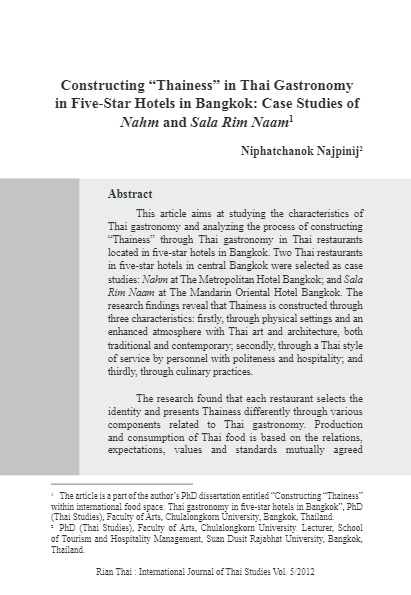Niphatchanok Najpinij
Abstract
This article aims at studying the characteristics of Thai gastronomy and analyzing the process of constructing “Thainess” through Thai gastronomy in Thai restaurants located in five-star hotels in Bangkok. Two Thai restaurants in five-star hotels in central Bangkok were selected as case studies: Nahm at The Metropolitan Hotel Bangkok; and Sala Rim Naam at The Mandarin Oriental Hotel Bangkok. The research findings reveal that Thainess is constructed through three characteristics: firstly, through physical settings and an enhanced atmosphere with Thai art and architecture, both traditional and contemporary; secondly, through a Thai style of service by personnel with politeness and hospitality; and thirdly, through culinary practices.
The research found that each restaurant selects the identity and presents Thainess differently through various components related to Thai gastronomy. Production and consumption of Thai food is based on the relations, expectations, values and standards mutually agreed between the “hosts” and “guests.” The production process also concerns Thai culinary regulations and, given the fact that these Thai restaurants are in an international food space, international standards must be implemented together with Thainess in the Thai food space. It was further found that the process of constructing meanings and Thainess is very dynamic since these Thai restaurants are situated in the context of globalization, thus, Thainess in Thai gastronomy is internationally negotiated.
(Published in Rian Thai: International Journal of Thai Studies, Volume 5/2012, Page 154-177)
Full Text : Download
